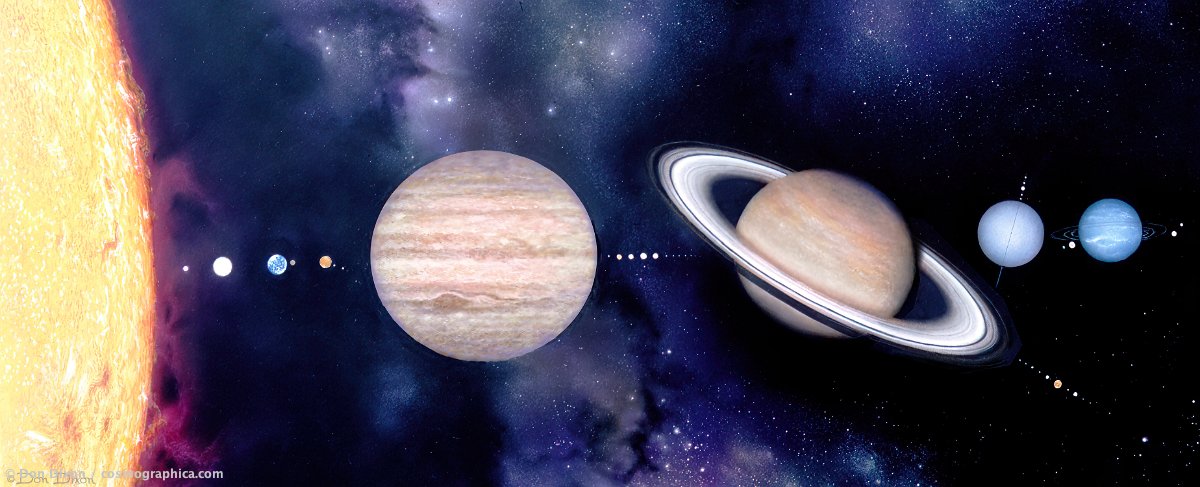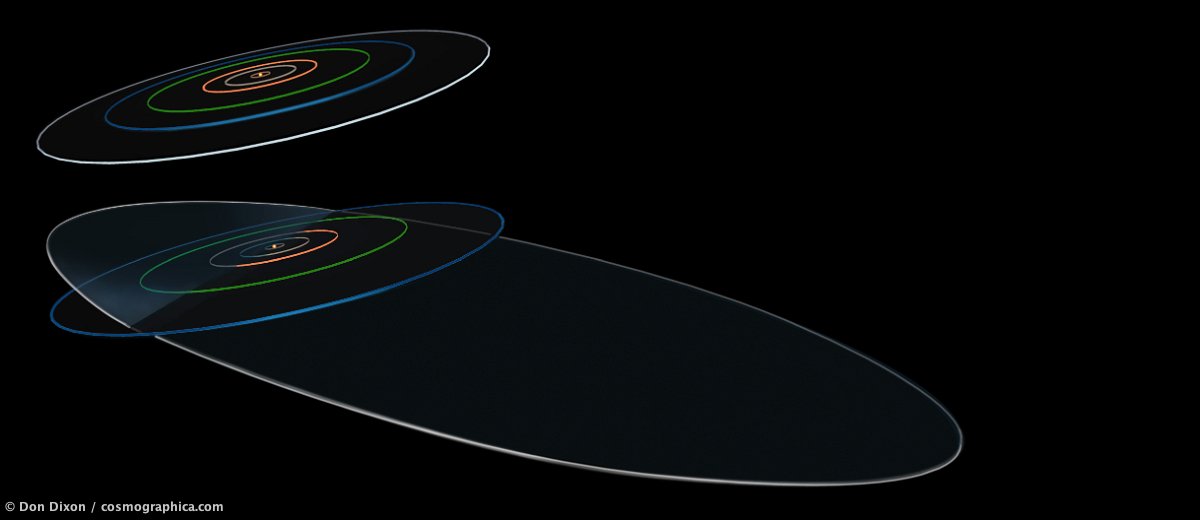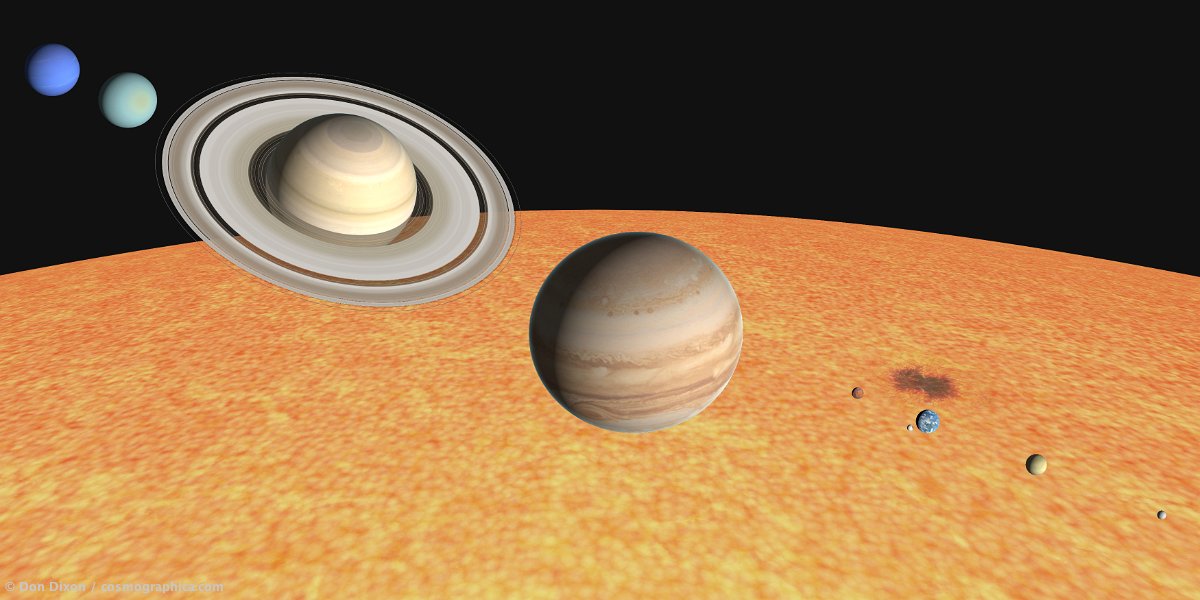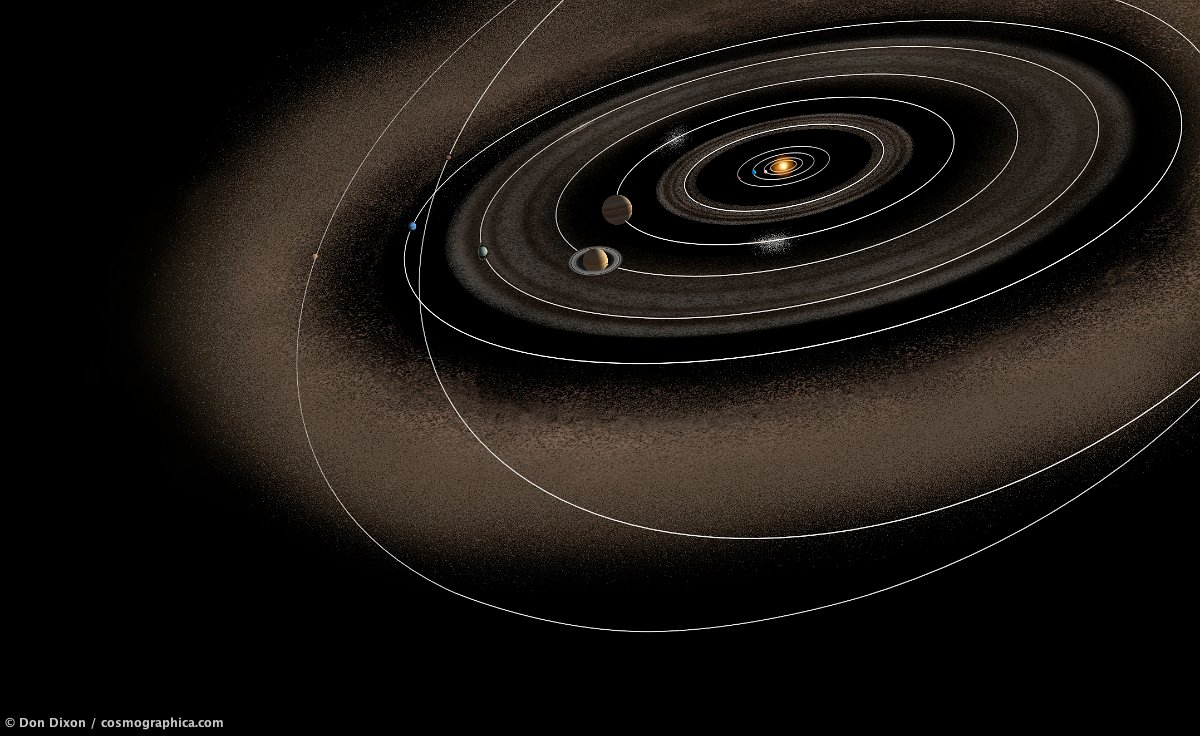
451 Solar System with Kuiper Objects
Diagram shows a new way of defining the solar system as consisting of 8 planets and orbiting belts of planetoids, including the Trojan and Centaur asteroid groups.The orbits of Pluto and Eris are shown. Digital, for Scientific American; Artwork © 2007 Don Dixon / cosmographica.com

485-solar-system-diagram
Diagram of the sun and planets showing their relative scale. The bluish haze beyond the orbit of Neptune represents the inner Kuiper Belt where dwell Pluto and other minor planets. The relative distances of the planets are NOT to scale. Diagram created for Scientific American in 2006.
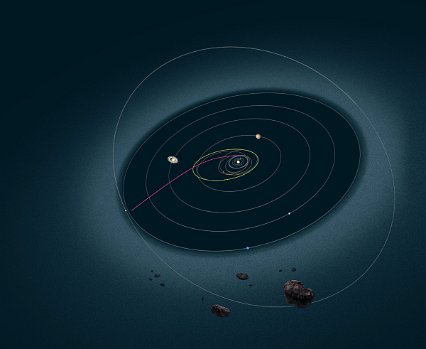
Spacecraft Probe the Kuiper Belt
499 - The Rosetta and New Horizons spacecraft explore different realms of the Kuiper Belt. Rosetta’s complex trajectory to rendezvous with Comet 67P/Churyumov–Gerasimenko is shown in brown. The orbit of Comet 67P is green. New Horizon’s path to Pluto is red. The main Kuiper Belt is in blue. A few Kuiper Belt Objects are shown near the camera. Digital painting by Don Dixon for Scientific American, November 2014.
